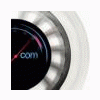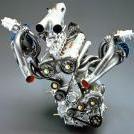Peugeot e-308 ed e-308 SW 2023
-
Contenuti simili
-
Peugeot 5008 & E-5008 2024 1 2 3 4 5
Pubblicato da AnLe,
- peugeot 5008
- peugeot 5008 2024
- (e 4 altri in più)
- 49 risposte
- 4863 visite
-
Peugeot 3008 & E-3008 2024 1 2 3 4 33
Pubblicato da DOssi,
- peugeot e-3008
- peugeot ufficiale
- (e 6 altri in più)
- 320 risposte
- 47469 visite
-
- 5 risposte
- 1287 visite
-
-
-




.thumb.jpg.46228d717c405acd43b45b79fddce6a4.jpg)



















Messaggi Raccomandati:
Crea un account o accedi per lasciare un commento
Devi essere iscritto per commentare e visualizzare le sezioni protette!
Crea un account
Iscriviti nella nostra community. È facile!
Registra un nuovo accountAccedi
Sei già registrato? Accedi qui.
Accedi Ora